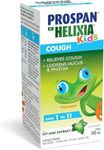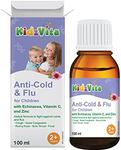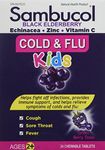Buying Guide for the Best Cold Medicine For Kids
Choosing the right cold medicine for kids can feel overwhelming, especially with so many options on the shelves. The most important thing is to match the medicine to your child's specific symptoms and age, and always follow the guidance of a healthcare professional. Remember, not all cold medicines are suitable for all ages, and some symptoms may be better managed with non-medicine approaches. Always read labels carefully and never give adult medicine to children.Age AppropriatenessAge appropriateness refers to whether a medicine is safe and effective for a child of a certain age. This is crucial because children's bodies process medicines differently than adults, and some ingredients can be harmful to younger kids. Medicines are usually labeled for specific age groups, such as infants, toddlers, or children over a certain age. Always check the label to ensure the medicine matches your child's age, and when in doubt, consult a healthcare provider.
Active IngredientsActive ingredients are the components in the medicine that actually treat symptoms, such as fever, cough, or congestion. It's important to know what each ingredient does and to avoid giving your child multiple medicines with the same active ingredient, which can lead to accidental overdose. Common active ingredients include acetaminophen (for pain and fever), dextromethorphan (for cough), and antihistamines (for runny nose). Choose a medicine with only the ingredients needed for your child's symptoms, and avoid unnecessary extras.
Symptom TargetingSymptom targeting means selecting a medicine that addresses the specific symptoms your child is experiencing, such as cough, runny nose, or fever. Some medicines are 'multi-symptom' and treat several issues at once, while others are focused on just one symptom. If your child only has one or two symptoms, it's usually best to pick a medicine that targets just those, to avoid unnecessary medication.
Dosage FormDosage form refers to how the medicine is given, such as liquid, chewable tablet, or dissolvable strip. This matters because younger children may have trouble swallowing pills, and some forms are easier to measure and administer. Liquids are common for younger kids, while older children might prefer chewables. Choose a form that your child can take easily and accurately.
Sugar and Dye ContentSugar and dye content refers to the presence of sweeteners and artificial colors in the medicine. Some children may be sensitive to these additives, or you may prefer to avoid them for health reasons. If your child has allergies or sensitivities, or if you want to limit sugar intake, look for medicines labeled as dye-free or sugar-free.
FlavorFlavor is important because it can affect whether your child will willingly take the medicine. Many children's medicines come in flavors like cherry or grape to make them more palatable. If your child is picky, choosing a flavor they like can make giving medicine much easier.















